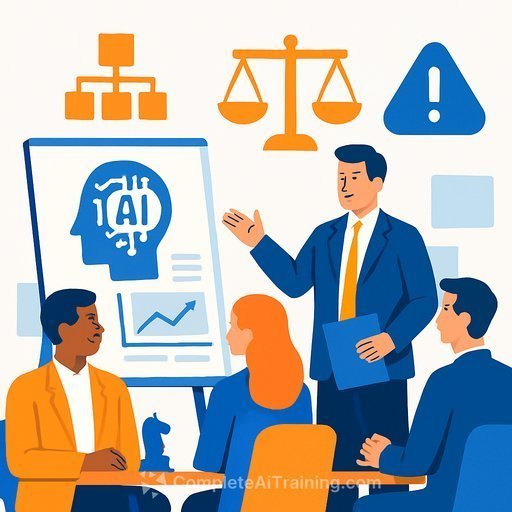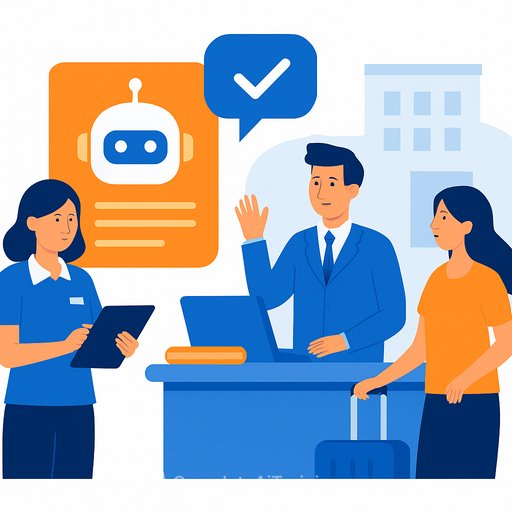HR priorities for 2026: Put AI to work with clear intent
AI should be at the top of the 2026 agenda for CHROs. Gartner urges HR leaders to create an HR-specific AI strategy alongside the company's central AI plan to upgrade how HR operates and delivers value.
HR sentiment is moving in the same direction. Lattice reports that 83% of HR professionals feel positive about agentic AI, and high-performing teams are already using more specialised HR tools than average. The message: it's time to move from pilots to repeatable value.
Build an HR-specific AI strategy
"With an HR-focused AI strategy in place, CHROs will evolve their HR operating models to unlock new strategic capabilities," according to Gartner. That means clarity on where AI helps people do their best work-and where it doesn't.
- Define principles: purpose, privacy, fairness, transparency, and human oversight.
- Prioritise use cases by impact and risk: talent acquisition, onboarding, learning, workforce planning, total rewards, and employee service.
- Set guardrails: data quality, bias checks, model monitoring, and approvals for new tools.
- Evolve the operating model: roles, RACI, AI product ownership, and change management.
- Vendor strategy: due diligence (security, explainability), integration, and exit plans.
- Measurement: time saved, quality of outcomes, error rates, employee trust, and adoption.
Gartner's HR insights can help you pressure-test your approach.
Adopt a "Now-Next" talent plan
Gartner recommends a dual horizon approach so you can execute and steer at the same time.
- Now (0-12 months): 2-3 AI use cases in production, manager training for responsible use, AI guidance in policy, and quick wins documented.
- Next (12-36 months): workforce planning with AI scenarios, skills taxonomy refresh, job and org design updates, and governance that scales with usage.
Prepare for human-AI work scenarios
The way AI is deployed will define how work gets done. CHROs should plan for multiple models, from AI as a co-pilot to AI-driven workflows.
- Redesign work: break roles into tasks, decide what is human-led, AI-assisted, or automated.
- Set expectations: quality standards, review steps, and accountability stay with people.
- Upskill: AI literacy for all, prompt fluency for knowledge workers, and tool-specific training.
- Protect people: change load management, well-being safeguards, and ethical escalation paths.
Help leaders make change routine
Gartner highlights three actions HR should drive so leaders make progress through constant change:
- Refocus on progress: clarify that leaders guide teams across a clear change journey and reset expectations about their role.
- Regulate discomfort: teach leaders to read emotions (their own and their teams'), identify triggers, and use practical coping methods to move forward.
- Build change reflexes: identify core skills (sensemaking, experimentation, feedback), insert practice into daily work, and secure commitment to repetition.
Equip managers for real productivity discussions
Teams need a shared definition of productive behaviour and a simple way to act on it. HR's job is to make those conversations easy to run and hard to avoid.
- Co-create team norms: meeting hygiene, focus time, async rules, tool usage, and response expectations.
- Give managers a script: align on outcomes, review workload, remove blockers, and agree on 1-2 changes to test for two weeks.
- Close the loop: gather feedback, keep what works, drop what doesn't, and repeat monthly.
- Empower employees: encourage them to propose fixes and track what improves their flow.
First 90 days: a simple plan
- Weeks 1-4: set AI principles and governance; shortlist use cases; form an HR-IT-Legal working group.
- Weeks 5-8: pilot 2 use cases (for example, candidate screening assist and internal mobility recommendations); define success metrics.
- Weeks 9-12: publish playbooks, train managers, measure outcomes, and decide what to scale or stop.
Metrics that matter
- Hiring: time-to-slate, quality of hire signals, and recruiter hours saved.
- Learning: skills gained, time-to-competence, and course completion driven by AI suggestions.
- Employee service: case resolution time, deflection rate, and satisfaction.
- Change and productivity: participation in change routines, meeting load reduction, and flow time.
- Risk: bias findings, model drift incidents, and adherence to review steps.
Resources
- Gartner HR - frameworks and research for HR leaders.
- Complete AI Training: Courses by Job - structured AI upskilling paths for teams.
Your membership also unlocks:






